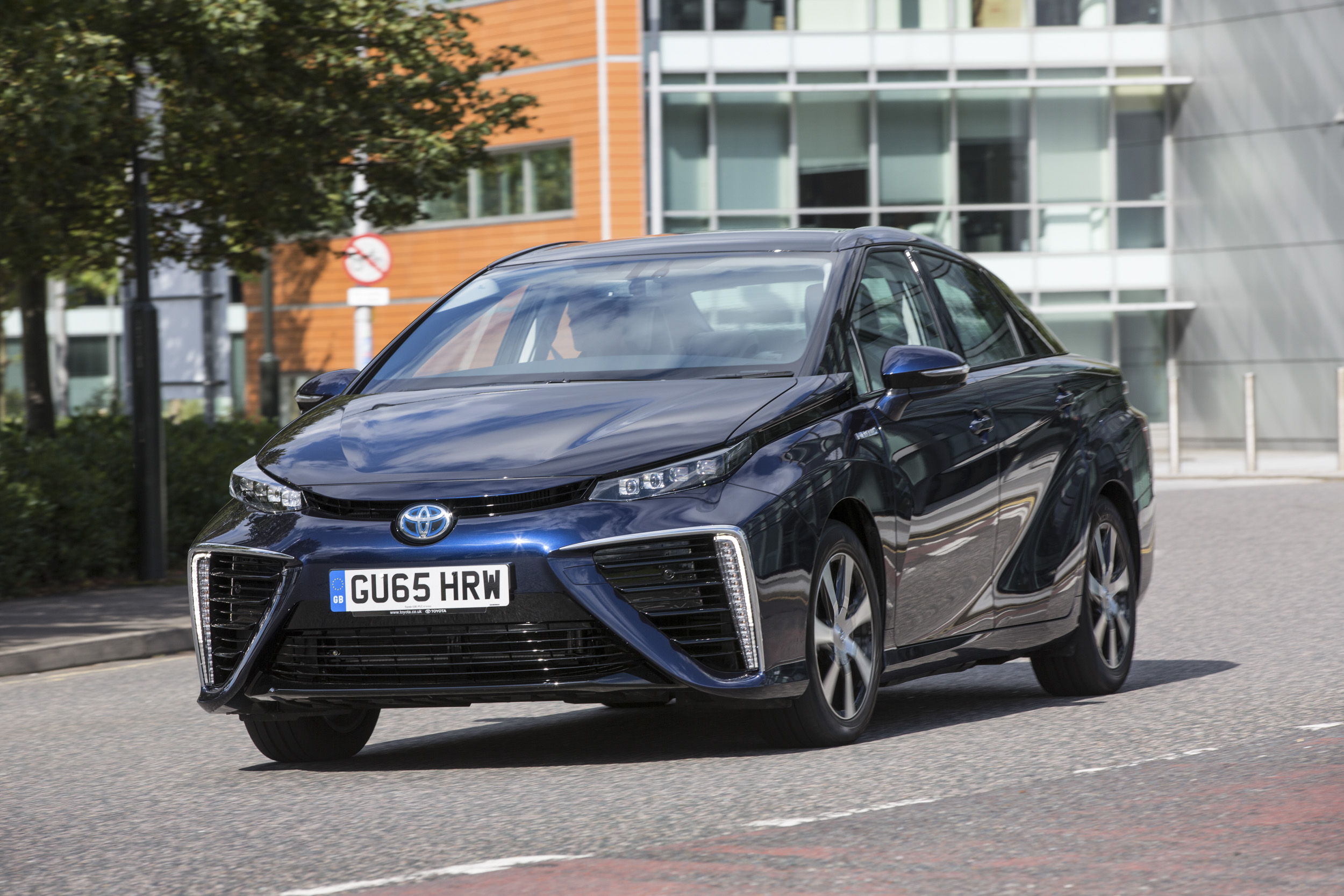


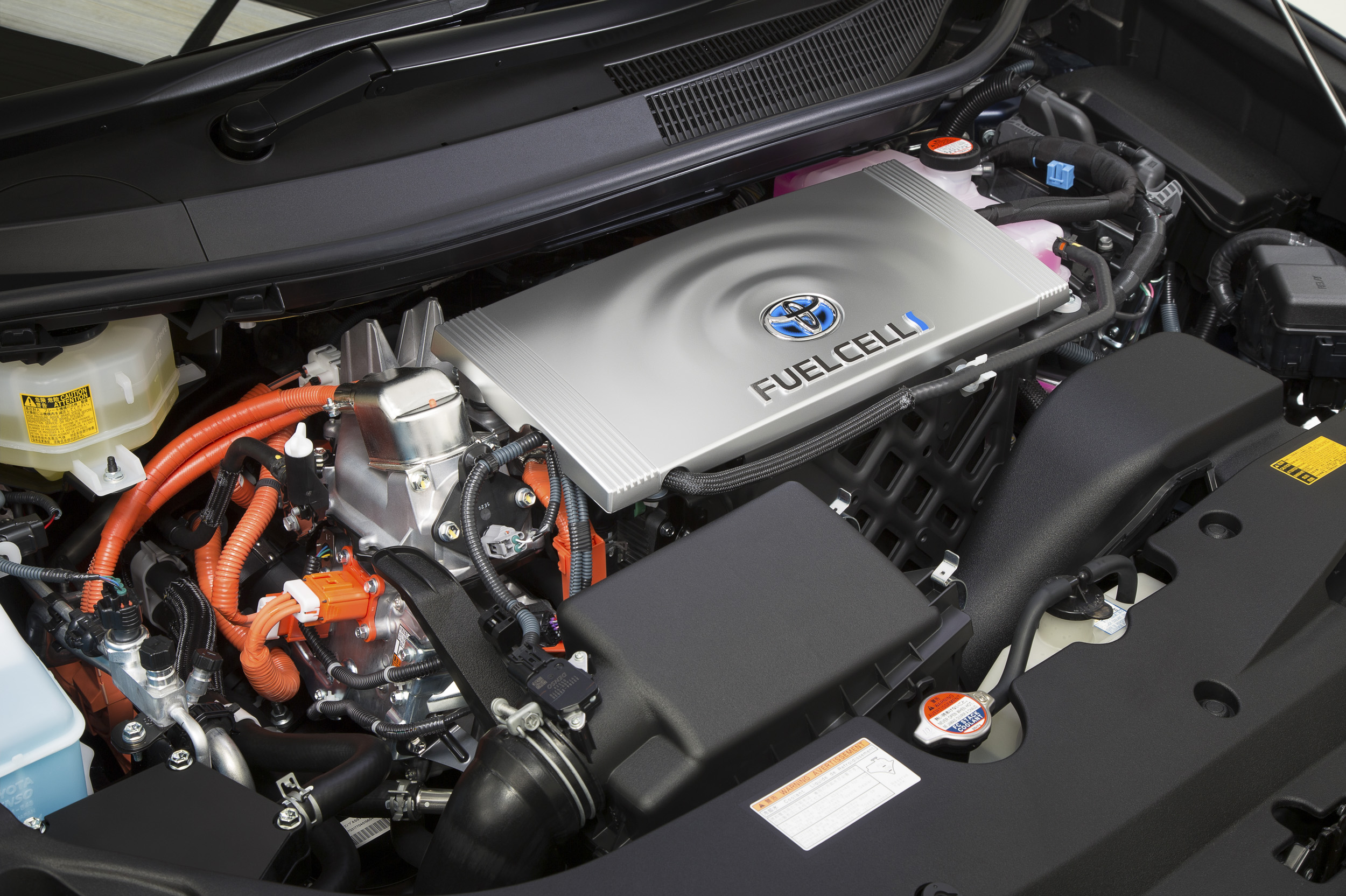

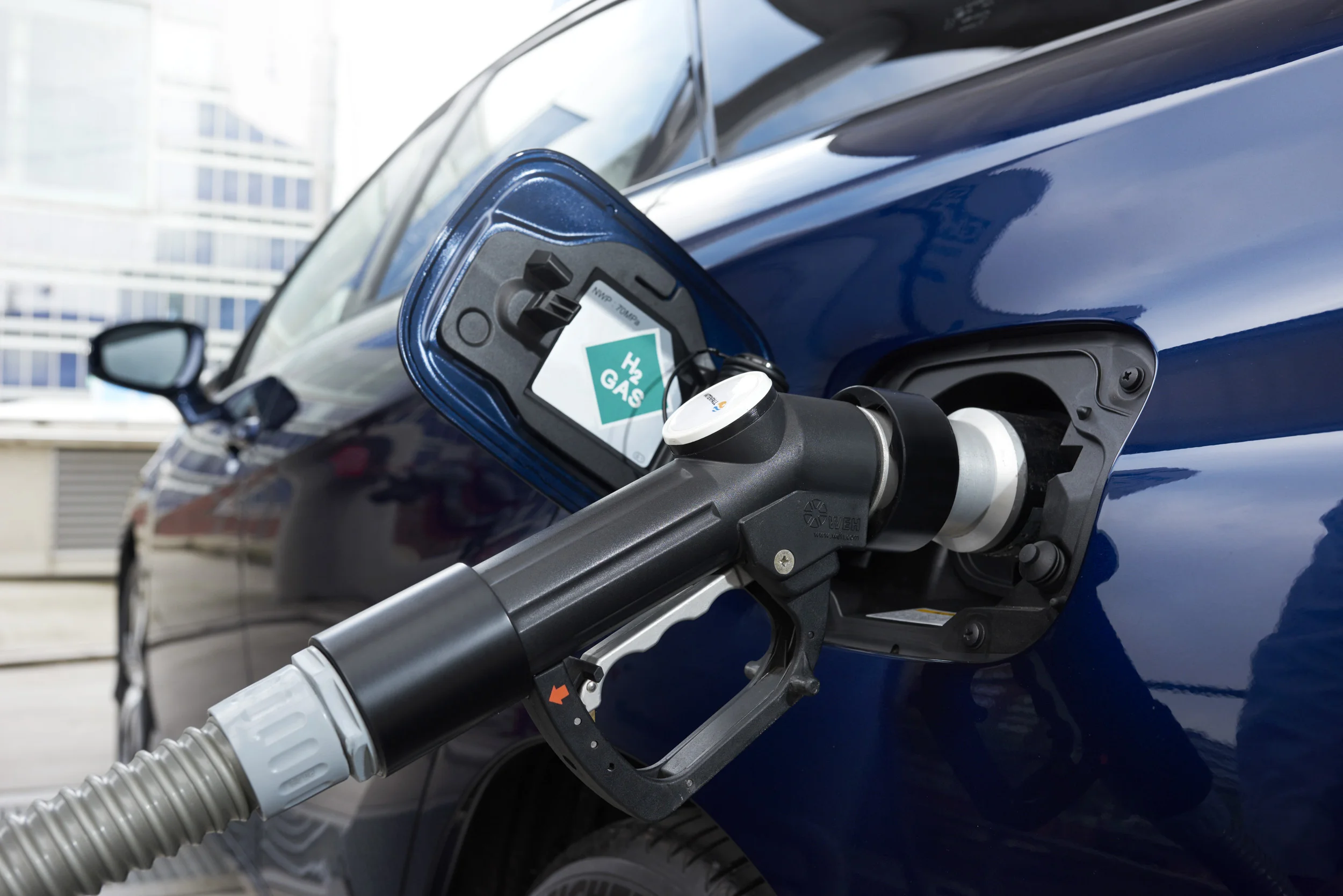
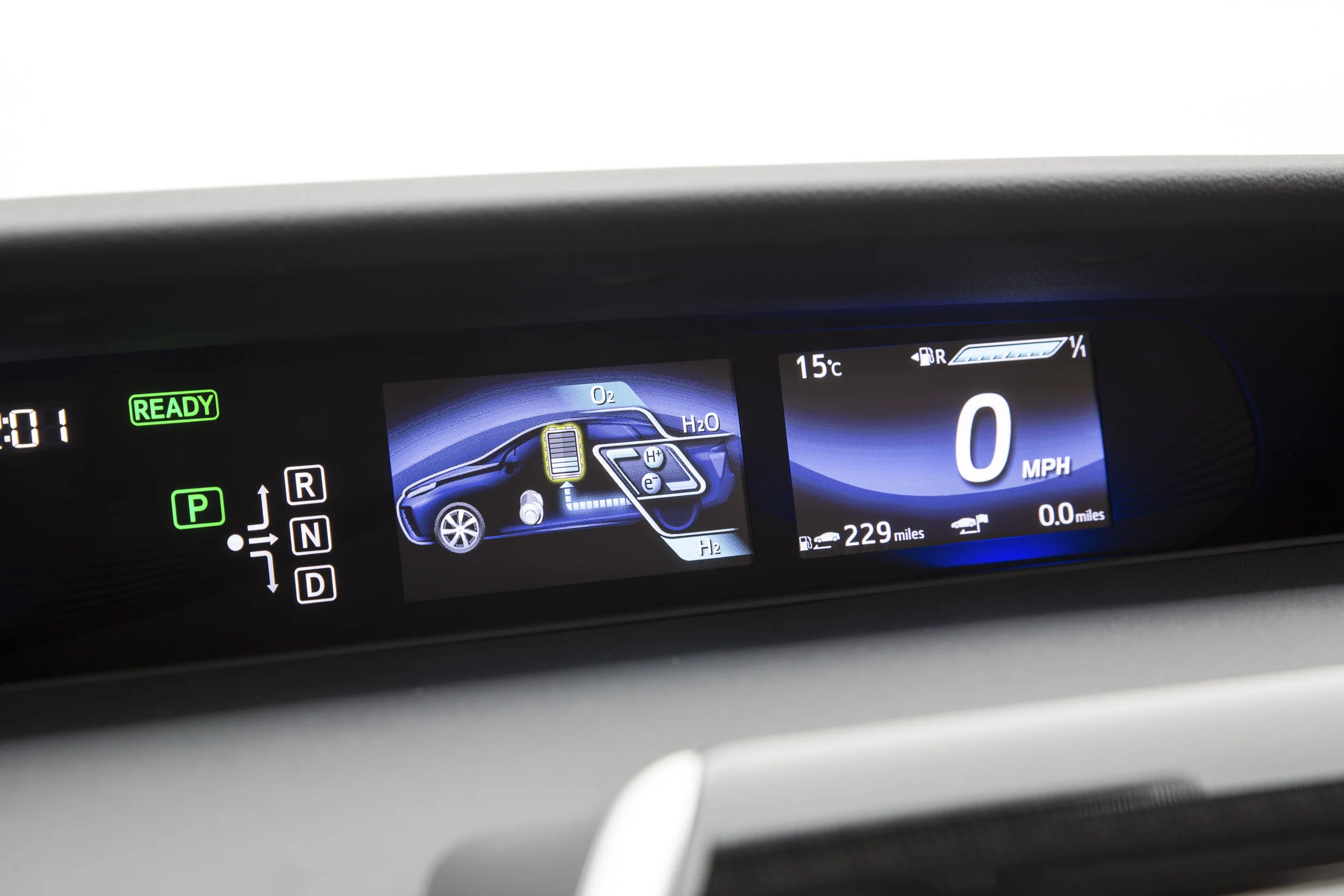
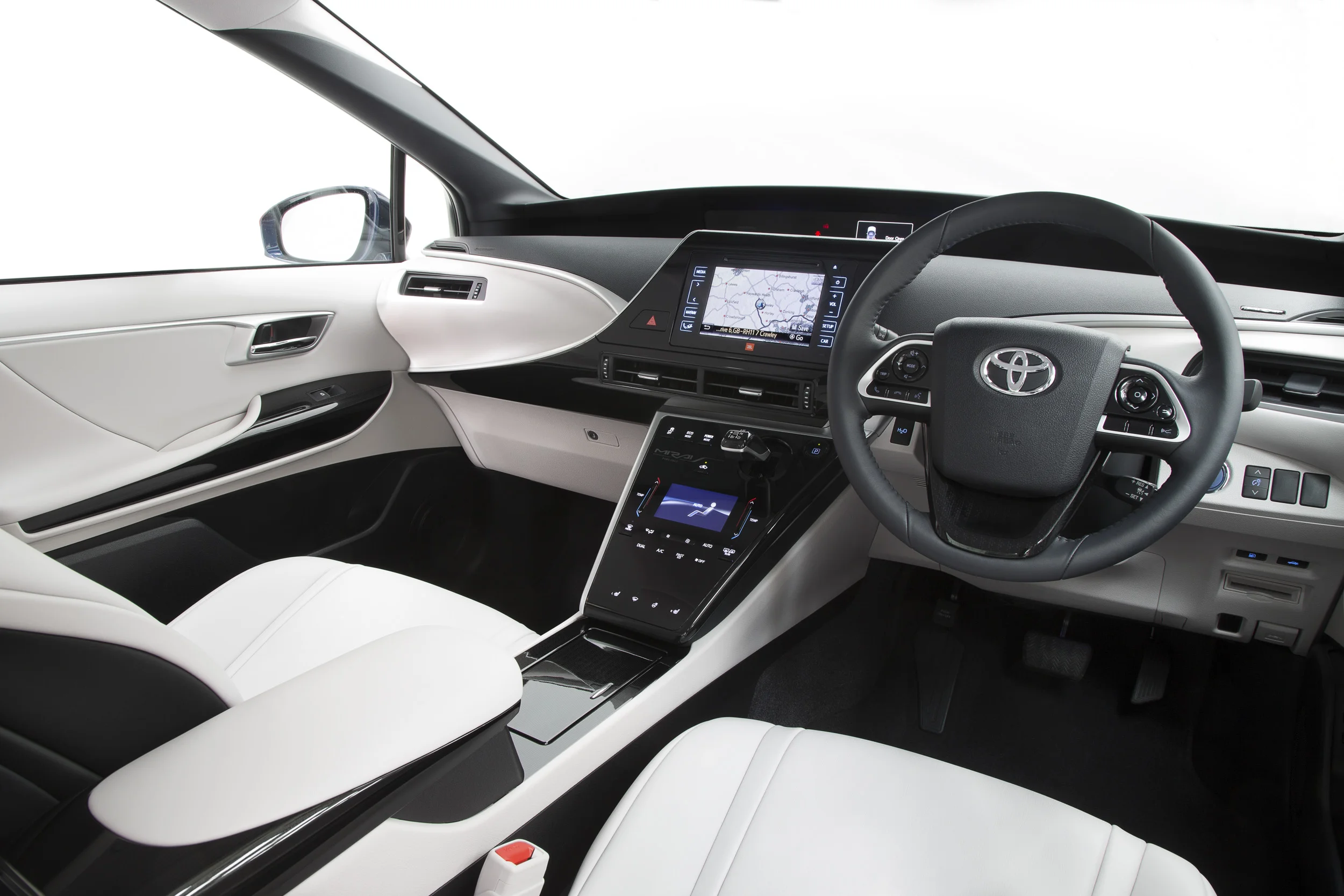


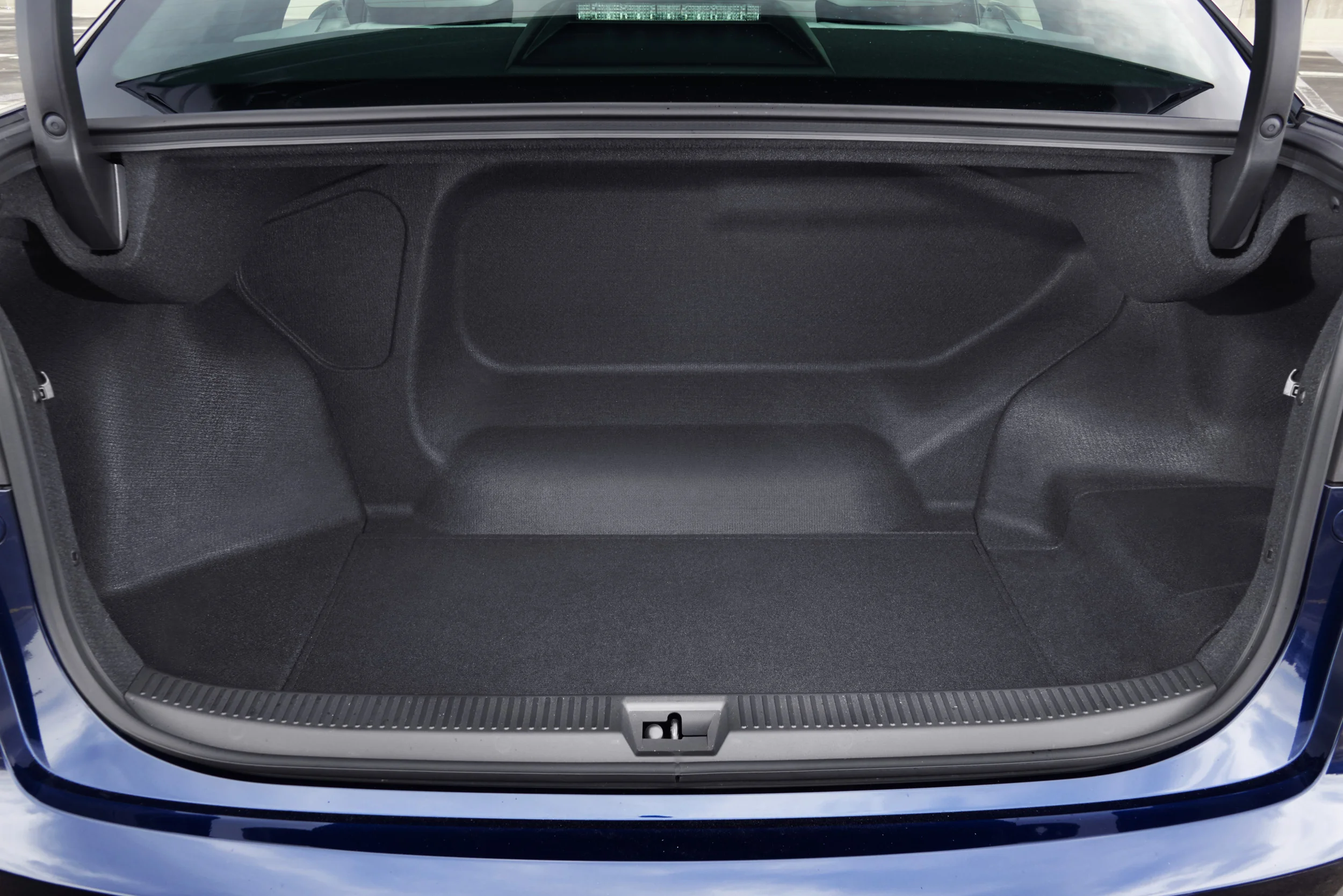
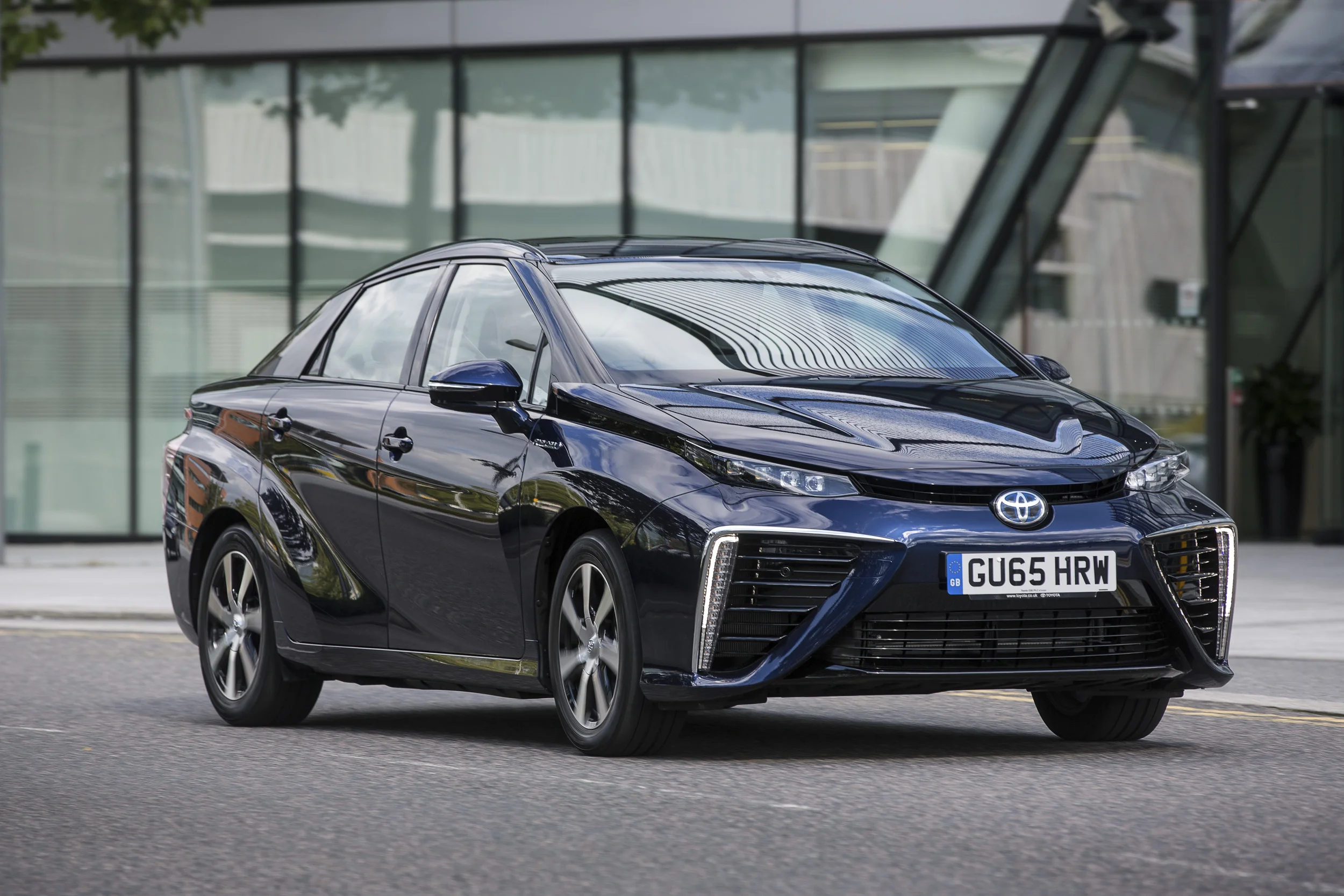
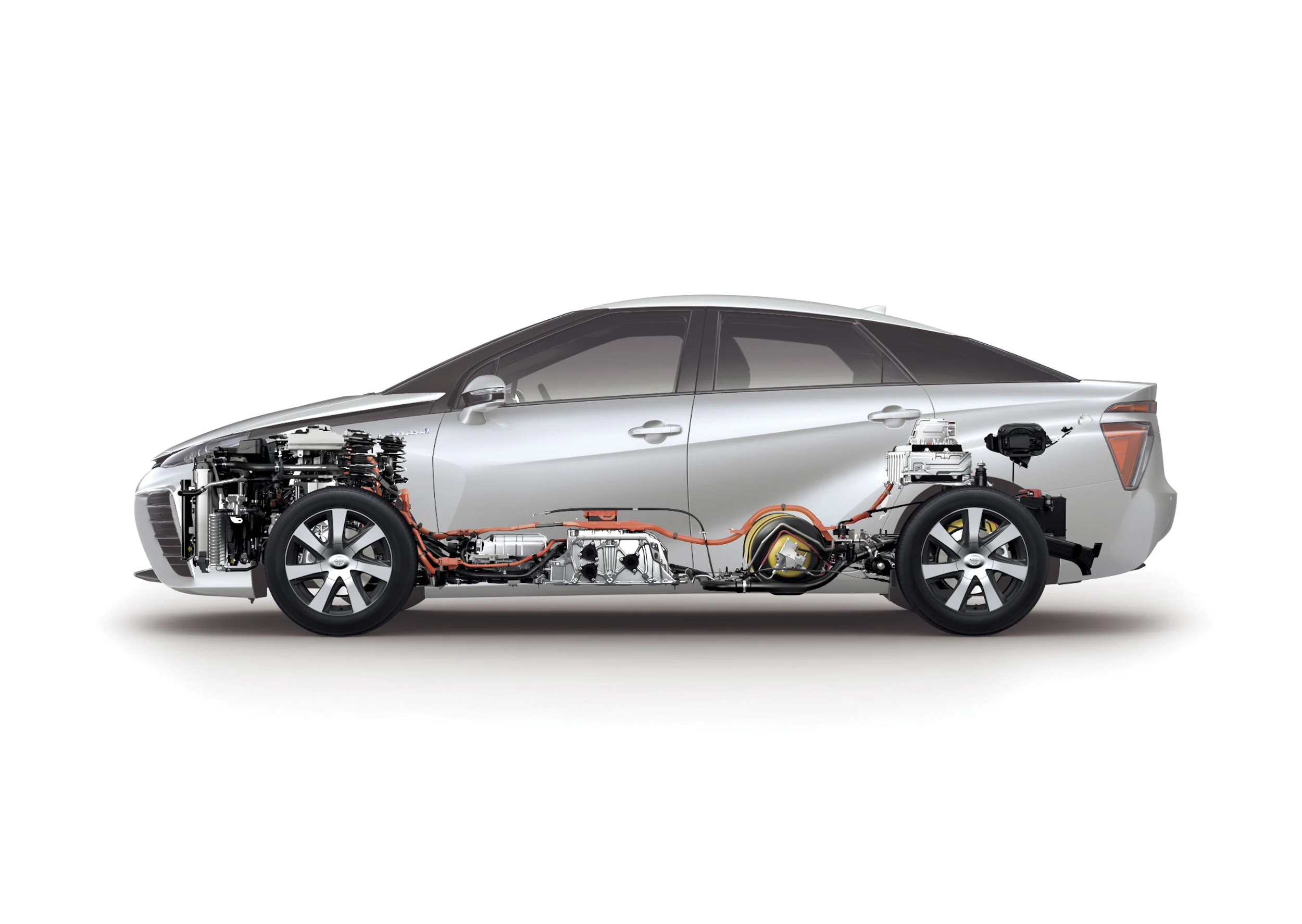
Tom Stewart drives the world’s first production hydrogen fuel cell saloon to market – the Toyota Mirai.
Despite the fact that the MIrai represents a technological milestone for Toyota, and the automotive industry as a whole, the Japanese carmaker only expects to sell about 100 a year in Europe and possibly none to private UK consumers, at least not for some time yet. Why? Well for starters a Mirai would cost you £66,000 OTR, or £750 per month to lease over four years/60,000miles. Factor in that there are currently just four hydrogen refueling facilities in the UK and the impracticality (and expense) of Mirai ownership becomes apparent.
However, it’s just been confirmed that the £66,000 will be reduced by £5,000 by way of the government’s Office for Low Emission Vehicles ‘plug-in’ car grant (despite the zero-emission Mirai not being a plug-in), while the leasing fee includes all servicing (inc. pick up/delivery and loan car), tyres and up to about £2,400 per year in fuel. Toyota will also provide a 24/7 concierge service and a 5yr/100k warranty with a 5yr premium roadside assistance package. So, there’s no shortage of incentive…
With a 152bhp (113kW) electric motor driving the front wheels and a single-ratio transmission, the Mirai is eager away from the lights and a useful overtaker. As with other EVs, throttle response, or more correctly, accelerator pedal response is both instant and linear. Although 0-62 in 9.6secs isn’t blistering, the Mirai’s healthy 335Nm of torque (18Nm more than a Lexus RX450h) is always on tap. Top speed is 111mph.
The Mirai also steers and handles decently, rides comfortably and, aside from a little road noise and the faint whine of the electric motor, it’s exceptionally quiet. In short, it runs on a different fuel, but it drives and behaves like a competent, well-sorted EV.
You can make up your own mind about the Mirai’s accentuated wedge styling. Some might consider it too progressive (not me), possibly even too aggressive, especially at the front (not me), but like it or not, it certainly has its own strong identity, and that’s no bad thing.
The Mirai’s interior design is mildly futuristic and the 4-seater cabin has a very contemporary feel. It’s comfy, adequately spacious and with just the one spec grade it’s well equipped as standard with touch-sensitive, sliding temperature controls, a JBL 11-speaker audio system, rain-sensing and de-icing wipers, a rear-view camera, Toyota’s Touch 2 with Go Plus multimedia/nav system and a wireless smartphone charger among much else.
Ultimately though, the Mirai feels no more opulent than a well-specced Avensis – which, incidentally, has a substantially bigger boot – and it’s much less sumptuous than a £60k Audi, BMW, Jag, Lexus or Merc.
Toyota says we should “Think of a fuel cell vehicle as a hybrid car where the petrol tank and combustion engine are replaced by a hydrogen tank and a fuel cell stack”. More accurately, think of the Mirai as car where the petrol/diesel tank and combustion engine are replaced by a hydrogen tank (two in this case), a fuel cell stack (which allows the hydrogen gas to react with oxygen from the outside air to produce electricity), a battery (to store and distribute energy generated from braking) and an electric motor.
The only bi-product or emission of the hydrogen-to-electricity process is water – 7 litres of it per 100km, which drips from a concealed plastic tube.
So where does hydrogen come from? Pretty much anywhere really, from biomass, natural gas or from water by electrolysis. That bit is relatively simple, renewable and eco-friendly.
Transferring the hydrogen from nozzle to the Mirai’s twin tanks at the required 700 bar is also a problem solved. The tanks, by the way, have a combined 122.4-litre capacity, but due to the high level of pressurization, hydrogen is measured by weight. Together the Mirai’s twin tanks hold up to 5kg.
At present hydrogen is about £10 per kg, so to fill a Mirai costs about £50 (included in Toyota’s leasing deal), which in turn gives a range of about 300 miles. To compare; a combustion-engined car averaging 50mpg would go about 200 miles further on £50 of fuel.
Unlike recharging the batteries on a plug-in or EV, the hydrogen filling process is as quick as with petrol or diesel – less than five minutes, but because it’s on account at a dedicated station, you won’t find yourself queuing to pay behind supermarket shoppers.
In a game of word association, ‘Hydrogen’ is likely to be followed by ‘Bomb’, but Toyota is very keen to reassure that safety is also taken care of as the Mirai’s tanks are bullet-proof and the car has been subjected to a uniquely intensive crash-test program. Should a fuel leak occur then, being 14x lighter than air, the hydrogen will rise and disperse harmlessly into the atmosphere. Should there be an abnormal rise in temperature, eg. a fire, then pressure relief device gradually releases the hydrogen to prevent overpressure or explosion. But ‘bulletproof’? Well yes – they’ve even shot the tanks with a high-velocity rifle to be sure.
The Mirai’s also been tested in all climates and it starts and operates in temperatures as low as –30°C.
So, the main issue for owners is hydrogen availability as in the UK at present you can only refuel a Mirai at Heathrow, Hendon and Swindon, with a Teddington ‘pump’ opening later this year. The hydrogen infrastructure is due to expand though, with two more (East London and Sheffield) in 2016, a further 10 or so by mid 2017 and a total of 65 by 2020 if all goes according to plan.
Should you buy one? Assuming you’re sufficiently flush, that you live in reasonable proximity to a refueling facility and that you’re an eager early adopter who’s excited by the notion of an emissions-free power station on wheels, I really don’t see why not.
